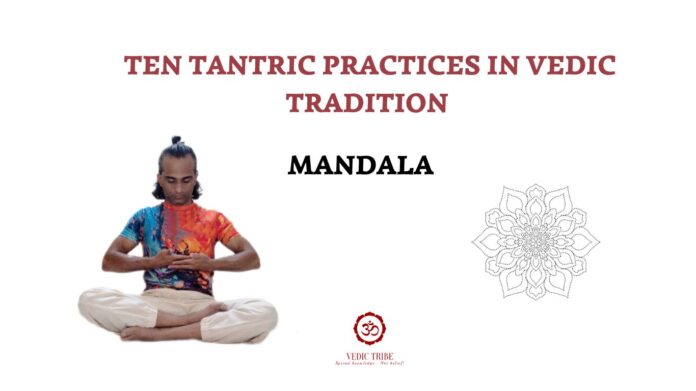Mandala: More Than Just Art
In the previous article, we discussed how Tantra is an essential part of Vedic spirituality. In this article, we will discuss “Mandala”.
In today’s popular culture, “mandala art” is often seen as a relaxing and visually appealing form of geometric design, full of intricate sketching.
But in Sanskrit and within the context of tantra, a mandala is much more than that.
While “mandala” can refer to a circle, along with terms like “vritta” and “chakra,” its tantric significance goes deeper. It’s a geometric representation of esoteric (hidden or inner) aspects of the spiritual journey.
Shapes:
Circle: Represents the completeness and wholeness of the source of creation, often referred to as Parabrahman (the ultimate reality). It signifies the infinite and eternal.
Square: Symbolizes the process of creation within the boundaries of the physical world. It represents structure, stability, and the manifest universe.
Triangle: Represents the movement of consciousness, either upward (towards spiritual ascension) or downward (towards material involvement). It embodies dynamic energy and transformation.
Mandala in Daily Practice
Mandala are not just abstract concepts. They are used in everyday spiritual practices:
Temporary mandala: In rituals like Sandhyavandana (daily Vedic rituals), mandalas are created using water or rangoli (colored powder). These temporary mandalas serve as focal points for worship and meditation.
Vastu Purusha Mandala: The concept of a “bindu” (dot) is central to many mandalas. The “vastu purusha mandala,” used in architecture and construction, is a prime example. It’s drawn with a central dot as the focus, within a circle or square, representing the energy of a space.
Sri Chakra: Mandala can also be drawn with varying numbers of lotus petals, each variation having its own symbolism. The “Sri Chakra” is a complex and powerful example of this.
Mandala in Vajrayana Buddhism
In Vajrayana Buddhism, mandalas play a crucial role in meditation practices. They are used as tools for visualization, helping practitioners to connect with specific deities and achieve higher states of consciousness.
Using Mandalas for Spiritual Practice
– Even at a basic level, mandalas can be incredibly helpful for focusing attention during spiritual practice.
– For beginners, keeping mandalas in places of worship or meditation can significantly enhance their practice.
– A simple mandala, such as an “Om” symbol within a six-petal lotus, can serve as a powerful focal point for meditation and contemplation. It serves as a visual anchor, keeping the mind from wandering.
– For advanced spiritual practice one can learn from a experienced Guru and after proper initiation one can worship the almighty through Mandalas.
In essence:
A mandala is a visual representation of cosmic and spiritual principles. It’s a tool for connecting with the divine, focusing the mind, and deepening one’s spiritual understanding. It is much more than a pretty picture, it is a tool for spiritual development.
In the next article, we will discuss “Mantra”
Madhwesh K
Vedic Tribe

